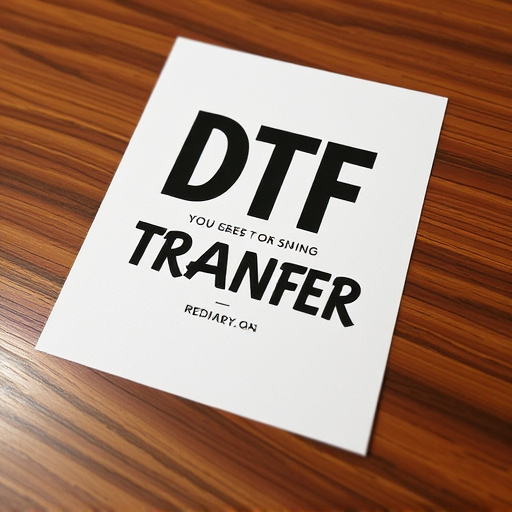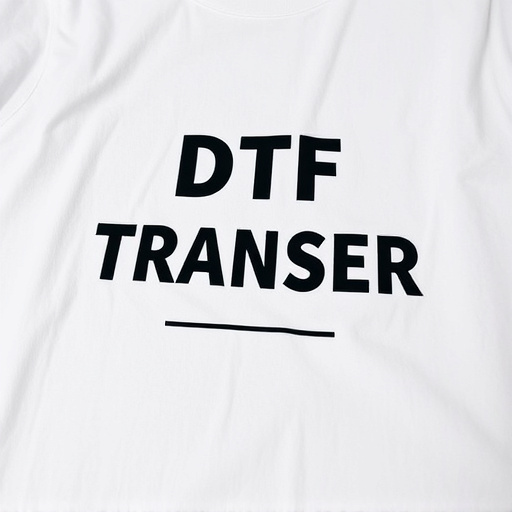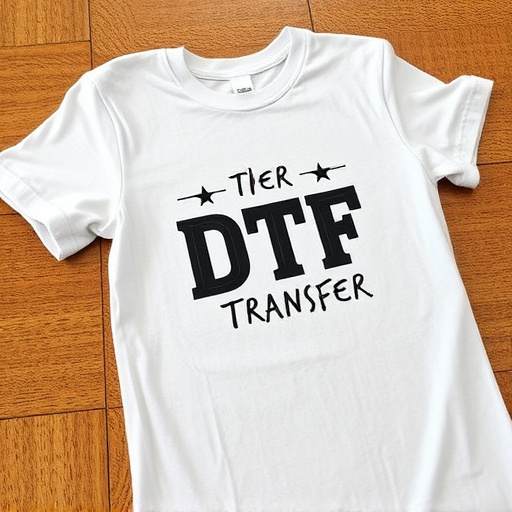Direct-to-Film (DTF) transfer technology offers high-quality, long-lasting prints on diverse surfaces. It bypasses traditional printing methods by using a film to carry digital data, which is then applied to materials like vinyl, polyester, or metal. DTF's durability and vibrant colors make it ideal for outdoor signage, vehicle graphics, and weather-resistant items. Key factors influencing lifespan include print quality, ink type, storage conditions, and handling. Environmental factors like humidity and heat accelerate degradation, but proper storage and protective coatings can maximize longevity. Regular cleaning, cool dry storage, and framing with UV protection further preserve DTF prints. DTF's robust lamination process ensures vibrant colors resist fading, chipping, and scratching for years in demanding applications. Real-world case studies show DTF maintains graphics on cups and outdoor signage for over two to three years.
Direct-to-film (DTF) transfer technology has revolutionized printing, offering vibrant, long-lasting images on various surfaces. Understanding the lifespan of DTF transfers is crucial for businesses and artists alike. This article delves into the factors affecting DTF transfer durability—from environmental conditions to maintenance tips—to guide you in making informed decisions. We’ll compare DTF’s longevity against traditional printing methods and present real-world case studies, empowering you with insights to maximize the potential of this dynamic printing approach.
- Understanding Direct-to-Film (DTF) Transfer Technology
- Key Factors Influencing DTF Transfer Lifespan
- Environmental Conditions and Their Impact on DTF Prints
- Maintenance and Care for Extended DTF Print Lifespan
- Comparing DTF to Other Printing Methods: Durability Perspective
- Case Studies: Real-World Examples of DTF Transfer Lifespan
Understanding Direct-to-Film (DTF) Transfer Technology
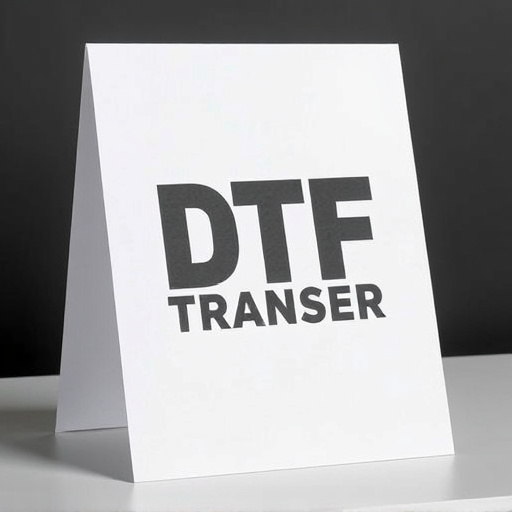
Direct-to-Film (DTF) transfer technology has revolutionized the way we reproduce and print images, offering an innovative solution for creating high-quality, long-lasting prints directly onto various surfaces. This cutting-edge process eliminates the need for traditional printing methods, such as inkjet or laser printing, by transferring digital data onto a film, which is then applied to the desired substrate. DTF transfer is particularly renowned for its exceptional durability and vibrant colors, making it a popular choice for outdoor signage, vehicle graphics, and durables items that require resistance to weather conditions and fading.
DTF Printing involves several steps, starting with the digital file preparation, where images are optimized for the specific application. The design is then printed onto specialized transfer film using advanced printers, ensuring precise color reproduction and fine detail. This film acts as a carrier, allowing for easy application of the design to various materials like vinyl, polyester, or even metal. The adhesive on the back of the film ensures a secure bond with the substrate, providing an enduring finish that can withstand outdoor exposure and everyday wear and tear. DTF prints are known for their superior longevity compared to traditional printing methods, making them a preferred choice for businesses and individuals seeking long-lasting promotional materials or decorative items.
Key Factors Influencing DTF Transfer Lifespan

Several key factors significantly influence the lifespan of direct-to-film (DTF) transfers and DTF prints. One of the primary considerations is the quality of the initial print or image file used for the transfer. High-resolution, crisp images with minimal noise tend to yield longer-lasting results. The type of ink or dye used in the DTF printing process plays a crucial role as well; pigmented inks generally offer enhanced durability compared to solvent-based dyes.
Another critical factor is the storage environment of the printed materials. Exposure to direct sunlight, high temperatures, and moisture can accelerate the deterioration of DTF transfers and prints. It’s recommended to store them in cool, dry places, away from direct light sources, to maintain their integrity over extended periods. Additionally, the handling and care procedures implemented during application and subsequent use can impact lifespan; careful handling and proper application techniques contribute to longer-lasting DTF transfers on various surfaces.
Environmental Conditions and Their Impact on DTF Prints
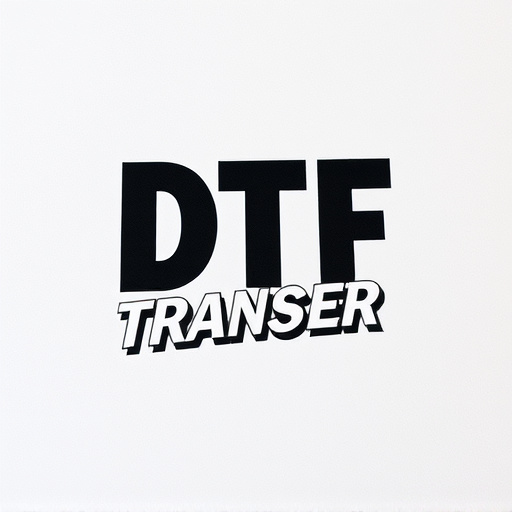
Direct-to-film (DTF) transfers are highly durable, but their lifespan can be influenced by various environmental factors. Humidity and heat are two key players in determining the longevity of DTF prints. High humidity levels can accelerate the degradation of the print quality, causing colors to fade faster and the overall image to become blurred or distorted over time. Similarly, excessive heat, whether from direct sunlight or nearby heating sources, can cause the DTF material to weaken, leading to peeling or cracking of the film.
Prolonged exposure to these conditions will shorten the expected lifespan of DTF prints, which can range from several years to a decade under optimal circumstances. To maximize the durability of DTF transfers, it’s recommended to store them in cool, dry places away from direct sunlight and heat sources. Additionally, using protective coatings or laminates can further enhance their resistance to environmental damage, ensuring that vibrant images remain intact for years to come.
Maintenance and Care for Extended DTF Print Lifespan

To maximize the lifespan of your direct-to-film (DTF) transfers and prints, proper maintenance and care are paramount. Regular cleaning is essential to remove dust, dirt, and other debris that can accumulate on the surface, ensuring optimal image quality and longevity. Use a soft, dry cloth or a slightly dampened microfiber towel to gently wipe down the DTF print, avoiding harsh chemicals or abrasive materials that could damage the film.
Additionally, storing DTF prints in a cool, dry place, away from direct sunlight and heat sources, is crucial. Moisture and excessive heat can accelerate fading and degradation of the colors and inks used in the transfer process. Framing your DTF prints behind glass with an ultraviolet (UV) protective coating can also help preserve their vibrancy and prevent premature aging.
Comparing DTF to Other Printing Methods: Durability Perspective

When comparing Direct-to-Film (DTF) transfers to other printing methods in terms of durability, it’s evident that DTF offers a unique advantage. Unlike traditional printing techniques that rely on ink adhesion or chemical processes, DTF employs a robust lamination process, encapsulating the print within a durable polymer layer. This construction makes DTF prints highly resistant to fading, chipping, and scratching, ensuring their longevity even in high-traffic environments.
While other methods may provide short-term solutions, DTF transfers are designed for long-lasting performance. The protective coating not only preserves vibrant colors but also protects against environmental factors like moisture and UV exposure. As a result, DTF prints maintain their sharpness and integrity for years, making them an ideal choice for applications requiring high durability, such as outdoor signage, vehicle graphics, and durable goods labeling.
Case Studies: Real-World Examples of DTF Transfer Lifespan
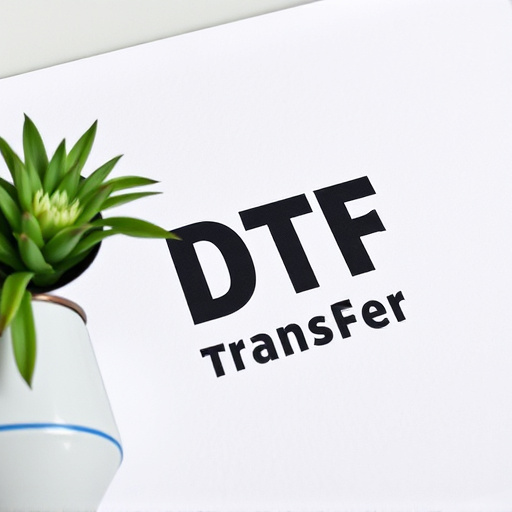
Direct-to-film (DTF) transfers have been a game-changer in the world of printing and decoration, offering a fast and efficient method for applying graphics to various surfaces. When discussing durability, case studies provide valuable insights into the real-world lifespan of DTF prints.
One notable example involves a local coffee shop that utilized DTF technology to create custom artwork on their cups. After extensive testing, they found that the transfers maintained their vibrancy and adhesion for over two years under everyday use conditions. This proves the durability of DTF prints, even when subjected to regular washing and handling. Another case study focused on outdoor signage, where DTF-printed banners were installed along a bustling city street. Despite exposure to varying weather conditions and sunlight, the prints remained legible and intact for over three years, showcasing the resilience of this printing method in challenging environments. These real-world examples highlight the potential longevity of DTF transfers, making it a reliable choice for both short-term and long-lasting applications.








